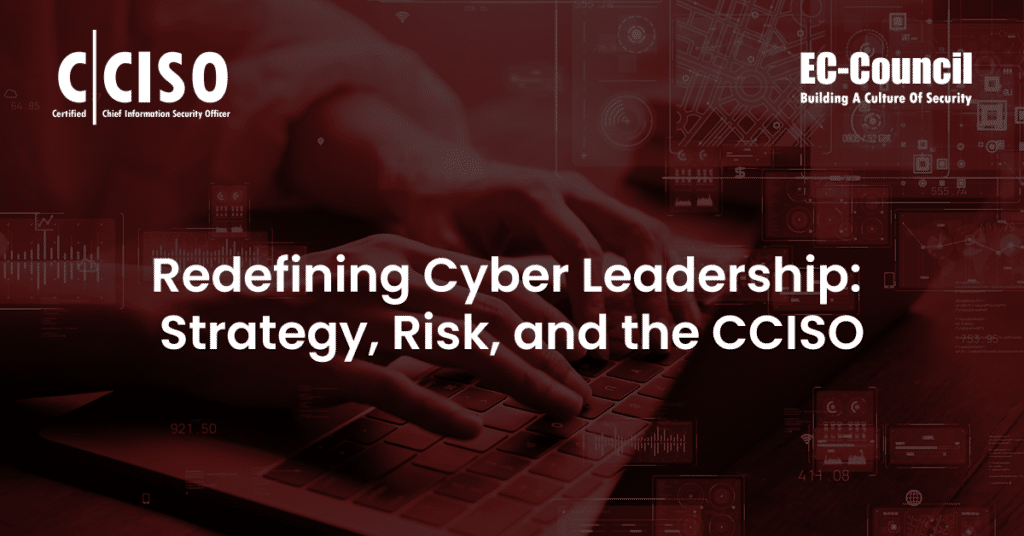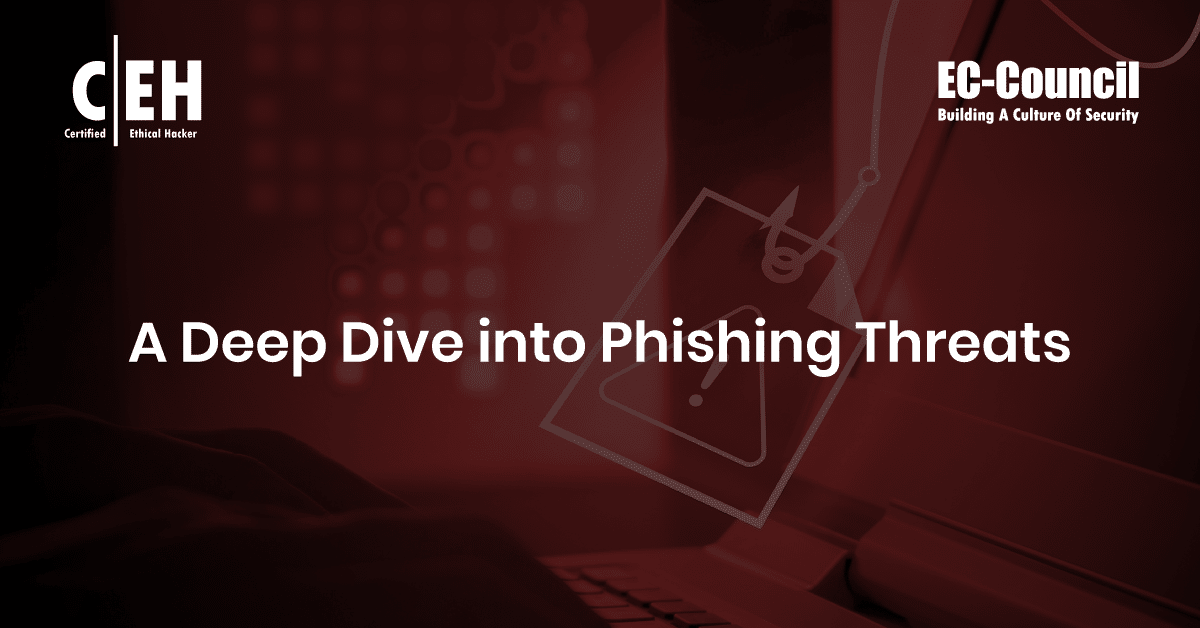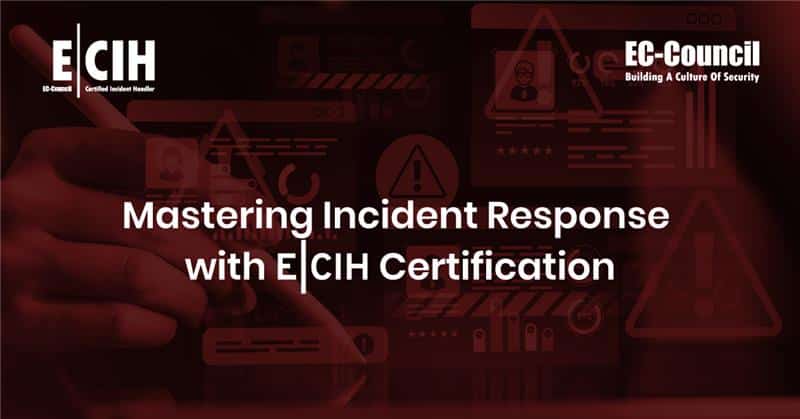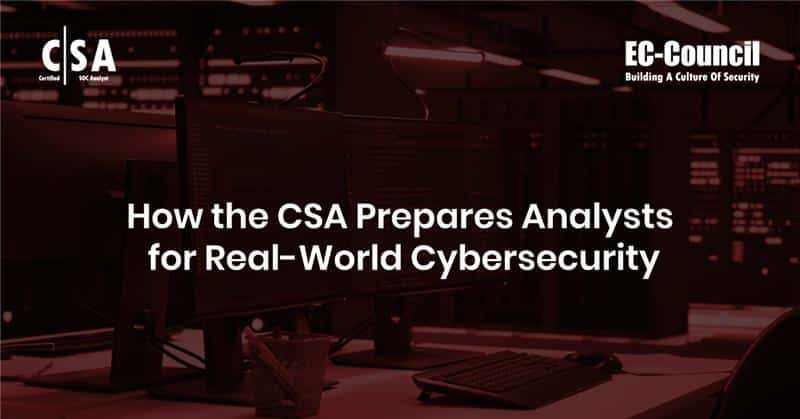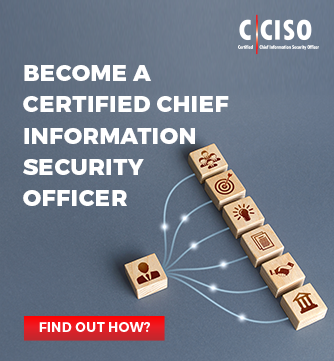Redefining Cyber Leadership: Olusegun Opeyemi-Ajayi on Strategy, Risk, and the CCISO Advantage
The cyber threat landscape has drastically evolved over the past two decades—from hobbyist hackers and script kiddies experimenting for fun to organized, financially driven attacks involving large groups and even nation-states. To better understand the evolving threat landscape, EC-Council’s CyberTalks team interviewed CISO Olusegun Opeyemi-Ajayi, whose dynamic career spans over two decades in IT and cybersecurity. Olusegun discusses the evolution of his role from a network engineer to a strategic cybersecurity leader and highlights the critical responsibilities of safeguarding the cyber infrastructures. He also sheds light on the value of the Certified CISO (CCISO) certification in preparing cybersecurity leaders for executive roles, emphasizing the importance of aligning security initiatives with business objectives. His perspectives on leadership, risk communication, and continuous learning offer valuable takeaways for aspiring and current cybersecurity professionals.
Tell us about your current role in cybersecurity
In my role as CISO, I’m responsible for building and driving the agenda for our cybersecurity program, as well as developing a strategic plan to safeguard our resources, information systems, and data.
As a public agency,
is committed to delivering services to the people of New York City in a safe and secure manner. I lead a dedicated team of security professionals who work collaboratively to maintain the strongest security posture possible for our organization.
We’ve worked closely with various business units across the department to enhance and ensure security practices.
It’s a large department and is involved in a wide range of services—from the Internet of Things (IoT) and operational technology (OT) to the management of critical infrastructure such as roads, traffic lights, security cameras, and bridges. Ensuring the secure and uninterrupted delivery of these services requires a comprehensive and resilient cybersecurity strategy. It’s a challenging but incredibly rewarding mission.
Tell us something about your journey so far
It’s been quite an interesting journey for me. I began my career as a network engineer, working primarily in infrastructure. I was involved in building and managing networks—setting up switches, routers, wide area networks, and troubleshooting across different IT domains. I collaborated closely with teams responsible for servers, desktops, and other core systems. I truly enjoyed that work for a time.
However, in the early 2000s, I noticed that security was beginning to emerge as a critical focus. Tasks like installing antivirus software and conducting vulnerability scans were becoming more common, and I found that shift fascinating.
Back then, attacks often came from hobbyist hackers or curious individuals—nothing like the sophisticated threats we see today. But even then, I saw the need to better protect digital infrastructure. So, I started pursuing certifications and training to strengthen my skills. That led to an opportunity to join an organization that was looking to build a security program from the ground up. It was a valuable learning experience—we developed policies, guidelines, and standards and implemented security controls from scratch. Over time, that program evolved significantly.
I also made the decision to go back to school and earn a degree in Management Information Systems to gain more formal academic experience in the field. Before entering IT, I actually worked in the music industry as a sound engineer and producer. Interestingly, that early exposure to computers in the studio helped spark my interest in technology, which eventually grew into a full career in IT and, later, cybersecurity.
Since then, I’ve had the opportunity to work with startups, public sector organizations, and various city agencies. I’ve been with the City of New York for nearly 20 years, taking on increasing responsibilities.
At one point, I served as Senior Director for Security and Risk Management at a former organization where I worked for 15 years.
How has the Certified CISO program helped you overcome the challenges in your current role? What were the most important takeaways from the Certified CISO program?
It’s been an interesting experience. Having earned several technical security certifications over the years, pursuing the CCISO certification was a different and fascinating journey. What stood out to me was the emphasis on the business side of cybersecurity. As a chief information security officer, your role is more about leadership, strategy, and program management rather than purely technical work.
One of the most impactful aspects was learning to communicate risk in business terms. Instead of simply highlighting vulnerabilities or technical threats, the focus was on translating those into business impacts, helping stakeholders understand how a breach, an attack, or a vulnerability could affect operations, finances, or reputation. Bridging the gap between technical and business language has been critical in my role.
Another benefit has been the ongoing education and resources. The webinars, case studies, and access to a broader community of professionals have been incredibly helpful. Learning from others across various industries has given me fresh perspectives and practical knowledge that I apply regularly in my role as a CISO.
Overall, the CCISO certification has been a great asset in my professional journey, and I’m very glad I pursued it.
What prompted you to choose Certified CISO as your next certification after CISSP? What do you think distinguishes the Certified CISO from other industry certifications?
The Certified CISO (CCISO) certification is unique in its approach and focus. It’s specifically designed for individuals who are either in a chief information security officer role or aspiring to be in one. While many other certifications help people understand the fundamentals of cybersecurity or serve as an entry point into the field, the CCISO is geared toward professionals who have years of experience and are looking to grow into leadership positions.
The CCISO program focuses on bridging the gap between technical expertise and business strategy.
A key aspect is learning how to communicate effectively with senior leadership and board members—people who may not have a technical background. It’s about translating complex security topics into language that makes sense to them, especially in terms of risk, impact, and the organization’s bottom line.
The certification equips professionals with the skills to match technical operations with business operations, helping ensure that cybersecurity is seen not as a technical obstacle but as a strategic business enabler. That, in my view, is the real value of the CCISO certification—it builds leaders who can operate at both the technical and executive levels seamlessly.
Did the Certified CISO impact you positively in your career?
Oh, certainly—it has had a significant impact on two fronts. First, from a professional branding perspective,
Secondly, it adds an important dimension of continued learning to my professional profile. Being a chief information security officer doesn’t mean the learning stops. In fact, it’s more important than ever to stay ahead. Earning a certification that goes beyond the standard technical qualifications—something that’s specifically aligned with leadership and strategic thinking—has really elevated my professional standing.
Even within my organization, when I earned the certification, I shared the news with senior leadership. It was important for me to demonstrate that I’m not just a CISO by title, but I also have the credentials to back it up. The certification has helped me communicate more effectively with the business side of the organization, translating technical concerns into terms they understand and value. Overall, it’s been a great asset—not just in terms of recognition but also in enhancing how I approach my role strategically. And yes, I wouldn’t mind if it led to a few more dollars as well.
Do you think that every leader in a cybersecurity role would benefit from a holistic program like the Certified CISO?
Oh yes, absolutely.
The program offers exposure to a broad range of critical areas, whether it’s risk management, operations, or governance. These components are essential when you’re responsible for setting the strategic direction of your organization’s security program.
The certification is especially valuable because it equips you to think and operate at a leadership level. It’s not just about technical knowledge—it’s about understanding how to build and mature a security program holistically and strategically. Earning this certification not only enhances your professional profile but also deepens your ability to drive real impact within your organization.
More importantly, the experience of preparing for and passing the certification helps reinforce that leadership mindset. It signals that you’re committed to continuous learning and capable of translating complex cybersecurity issues into actionable, strategic outcomes. I would strongly recommend it to anyone looking to grow in their role and contribute meaningfully at the leadership level.
How was your experience participating in the Certified CISO Hall of Fame? And what does being a finalist mean to you?
Well, everyone appreciates being recognized, right? So, just the recognition alone was a great morale booster. It affirmed that the work I’m doing is meaningful and being noticed by others, which is always encouraging.
As soon as I received the recognition, I proudly added it to my LinkedIn profile. Being selected as a runner-up in the CCISO Hall of Fame was a great honor. The response has been overwhelming—in a good way. I’ve received positive feedback from colleagues, peers, and even senior leadership. It’s incredibly rewarding to see your efforts acknowledged.
Would you recommend the Certified CISO certification to peers who want to pursue a role in executive management of the cybersecurity industry?
Oh, certainly. I would definitely recommend taking the certification exam and aspiring to earn the CCISO designation. As you grow in your career in information technology or information security, you eventually move beyond the purely technical aspects and step into more managerial and leadership roles.
At that level, your interaction with business units and senior leadership becomes more frequent. And at that point, it’s no longer just about your technical expertise—because leadership often doesn’t understand or prioritize technical jargon. What resonates with them is how cybersecurity ties directly into business impact—how it affects operations, risk, and, ultimately, the bottom line.
It shows that you value continuous learning and are actively working to improve yourself and your organization.
The knowledge gained from this certification is not just theoretical—it’s highly practical and can be applied directly to your day-to-day work. It helps you not only mature your security program but also contribute to the overall growth and resilience of the business.
So yes,
Conclusion
Olusegun Opeyemi-Ajayi’s journey highlights the eminent need for cybersecurity leaders who can balance technical expertise with strategic vision. Through his experience, it is evident that certifications like Certified CISO are not just milestones—but rather enablers of more effective, business-aligned leadership. His candid reflections demonstrate how continuous but structured learning, along with real-world application and recognition, can significantly impact a CISO’s role and effectiveness.About the Interviewee
Olusegun Opeyemi-Ajayi is CISO at NYC DOT, a cybersecurity leader with 20+ years’ experience advancing enterprise security, risk management, and business-aligned strategies through expert leadership and delivery of complex security programs.


